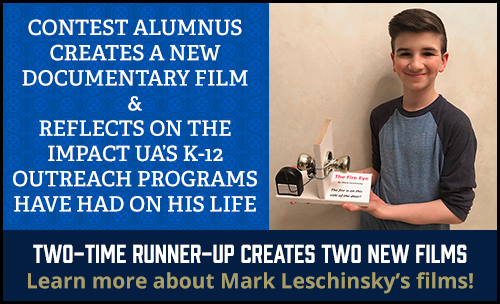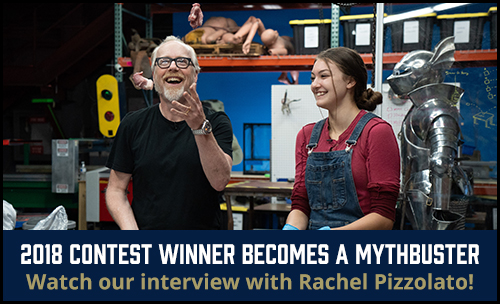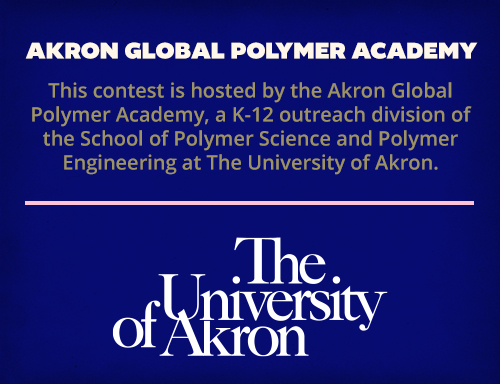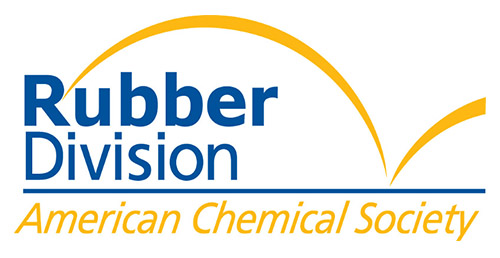Contest Lesson Plan: Stretch Your Students' Imaginations
Students will explore the properties of polymers using a poly putty made from glue and borax. Physical and chemical changes, conservation of energy, and kinetic friction will be explained. An extension of the lesson allows the students a fun opportunity to enter the AGPA Rubber Band Contest for Young Inventors. The entire lesson allows teachers to meet science content standards and introduce polymers and science concepts using the Best Teaching Practices Hands-On/Minds-On Learning and Authentic Problem-Based Learning.
Lesson Plan Resources:
- Stretch Your Students' Imaginations - Lesson Plan
- Lesson Plan Worksheet [PDF]
- Lesson Plan Rubric [PDF]
- AGPA Poly Putty Demonstration
Alignment with Standards:
NGSS Standards:- MS-PS1-1 Develop models to describe the atomic composition of simple molecules and extended structures.
- MS-PS1-3 Gather and make sense of information to describe that synthetic materials come from natural resources and impact society.
- MS-PS2-1 Apply Newton's Third Law to design a solution to a problem involving the motion of two colliding objects.
- MS-PS2-2 Plan an investigation to provide evidence that the change in an object's motion depends on the sum of the forces on the object and the mass of the object.
- MS-PS3-1 Construct and interpret graphical displays of data to describe the relationships of kinetic energy to the mass of an object and to the speed of an object.
- MS-PS3-5 Construct, use and present arguments to support the claim that when the kinetic energy of an object changes, energy is transferred to or from the object.
- MS-ETS1-1 Define the criteria and constraints of a design problem with sufficient precision to ensure a successful solution,taking into account relevant scientific principles and potenitial impacts on people and the natural environment that may limit possible solutions.
- MS-ETS1-2 Evaluate competing design solutions using a systematic process to determine how well they meet the criteria and constraints of the problem.
- MS-ETS1-3 Analyze data from tests to determine similarities and differences among several design solutions to identify the best characteristics of each that can be combined into a new solution to better meet the criteria for success.
- MS-ETS1-4 Develop a model to generate data for iterative testing and modification of a proposed object, tool, or process such that an optimal design can be achieved.
- RST.6-8.1 Cite specific textual evidence to support analysis of science and technical texts.
- RST.6-8.3 Follow preciesly a multistep procedure when carrying our experiments, taking measurements, or performing technical tasks.
- WHST.6-8.2 Write informative/explanatory texts, including the narration of historical events, scientific procedures/experiments, or technical processes.
- Science as Inquiry, Content Standard A, Grades 5-8
- Physical Science, Content Standard B, Properties and changes of properties in matter, Grades 5-8
- Physical Science, Content Standard B, Motions and Forces, Grades 5-8
- Physical Science, Content Standard B, Transfer of Energy, Grades 5-8
- Ohio Academic Content Standards for Science:
- Grade 5 - Scientific Inquiry, Benchmark A, Doing Scientific Inquiry
- Grade 6 - Physical Sciences, Benchmark A, Nature of Matter; Science & Technology, Benchmark B, Abilities to Do Technological Design; Scientific Inquiry, Benchmark A, Doing Scientific Inquiry
- Grade 7 - Physical Sciences, Benchmark D, Nature of Energy; Science & Technology, Benchmark B, Abilities to Do Technological Design; Scientific Inquiry, Benchmark A, Doing Scientific Inquiry
- Grade 8 - Physical Sciences, Benchmark B, Forces and Motion; Science & Technology, Benchmark B, Abilities to Do Technological Design; Scientific Inquiry, Benchmark A: Doing Scientific Inquiry
- Ohio Revised Science Education Standards and Model Curriculum:
- Grade 5 - Physical Science, Topic: Light, Sound, and Motion: Gravitational Force; All students will use scientific processes to construct their knowledge and understanding in all science content areas; Technological and Engineering Design
- Grade 6 - Physical Science, Topic: Matter and Motion: kinetic energy and potential energy; All students will use scientific processes to construct their knowledge and understanding in all science content areas; Technological and Engineering Design
- Grade 7 - Physical Science, Topic: Conservation of Mass and Energy: Energy can be transformed or transferred but is never lost; All students will use scientific processes to construct their knowledge and understanding in all science content areas; Technological and Engineering Design
- Grade 8 - Physical Science, Topic: Forces and Motion: Friction, gravitational potential energy, elastic potential energy; All students will use scientific processes to construct their knowledge and understanding in all science content areas; Technological and Engineering Design
Classroom Resources For Teachers
Lesson Plans (located at the AGPA K-12 Outreach Website)- What is a Polymer? - Students will explore polymers in the everyday world. They will use their senses (except taste) to make observations and investigate the properties of polymers.
- Plink Plank Plunk - Students will design musical instruments from provided materials to understand the following properties of sound: frequency and pitch.
- Physical Properties of Bouncing Balls - Students create bouncing balls of various shapes and determine the differences in the height that the various balls bounce.
- Classifying Solids: Matter - Students make observations of solids and classify the items into groups based on their properties. Students are introduced to the three states of matter.
- Will It Stretch? - Students will receive unexpected results when a rubber band is heated and cooled. From this activity they will learn about one of the unique physical properties of the polymer, rubber.
- How Shocking! - Students will be challenged to build a shock absorbing structure using different polymeric materials or rubber that would best protect a gelatin "head" during an impact.
- Where in the World is Rubber? - Students will learn about the various people and places associated with those areas that produce natural rubber. They will be able to define and identify specific regions using human and physical characteristics.
- A Brief History of Rubber - Students will explore the development of rubber and its use in society. They will research the history of rubber and will construct a timeline to display key events and the progression of rubber's use in society.
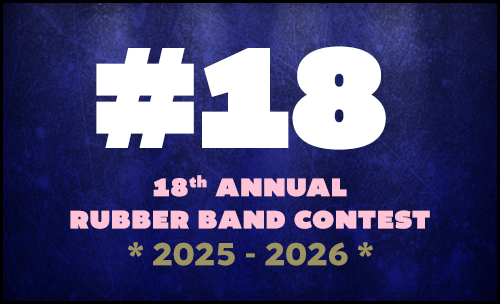
IMPORTANT LINKS
ALUMNI SPOTLIGHT
HOSTED BY
GOLD SPONSOR


